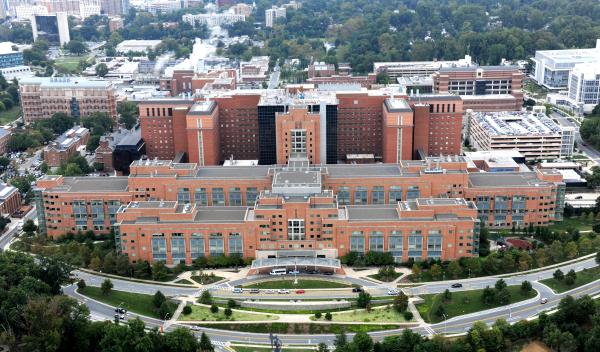On this page: Overview | Research | Continuity Clinic | Compensations | Research Training | Mentoring

NIH Clinical Center Building
Overview
The second and third years include clinical and/or bench projects under the direct supervision of faculty mentors.
Research
- We train academic infectious disease (ID) physicians who will be prepared for careers involving clinical, basic, or translational research after the completion of their fellowship
- We offer two funded years of research with an option for additional years to continue work on their projects
- We provide a myriad of translational, bench and clinical trial research opportunities within NIAID laboratories from which a fellow can choose.
- Additional Clinical Research Training Opportunities
- NIH Duke Masters program in clinical research
- The Foundation for Advanced Education in the Sciences (FAES) offers Graduate-level courses.
- Coursework leading to a M.P.H. through the neighboring Schools of Public Health.
Continuity Clinic
Weekly infectious diseases clinics
- Second year clinic is held at either George Washington University Hospital or Washington Hospital Center
- Dynamic urban clinics to further solidify HIV knowledge
- Second year fellows see a high volume of patients and a great diversity of cases
- Precepted by full-time faculty
Compensations
Board Review Course - All fellows have the sponsored opportunity to attend in their second and third year.
Infectious Diseases Board Certification Exam - We will reimburse fellows who successfully complete their ID board certification exam
IDSA conference - Each fellow is funded to go to one national meeting in their second year.
In addition to the above scheduled weekly conferences/lectures, there are weekly teaching conferences centered on topics relevant to the NIAID inpatient ward, HIV clinic, and parasitology service. Additional clinical talks include the weekly NIAID Grand Rounds; the weekly NIH Clinical Center Grand Rounds; and the monthly meeting of the Greater Washington Infectious Disease Society (GWIDS), in which all infectious diseases programs of the metropolitan Washington, DC, area rotate in presenting their more interesting cases. Numerous other conferences and didactic lectures are offered on a wide range of research and clinical subjects daily at NIH.
Research Training
Second and third years focus on a research project, under the direction of a faculty research mentor, allowing fellows to take advantage of the staggering breadth of research opportunities at NIH, including collaborative projects both within NIH and around the world.
Mentoring
Research Mentoring
- NIAID holds a retreat for fellows to meet potential research mentors and senior fellows
- Fellows consult individually with the laboratory Chiefs within NIAID to meet the potential mentors
- Fellows choose a research mentor by springtime of their first year
Career Mentors
Each fellow selects a career mentor from among the ID faculty, someone who is not involved with the fellow’s research area. The fellow and mentor meet and discuss the fellow’s career trajectory, including grant-writing possibilities and future job options.
ID Fellow Research Projects
Examples
- Principles Governing Establishment versus Collapse of HIV-1 Cellular Spread
- Using Big Data to Estimate the Market Size for Novel Gram-negative Antibiotics
- Mechanism of Cytotoxic CD8+ T Cell Induction by Antibodies During Viral Infection
- From Here to There: On the Path to an Effective Malaria Vaccine
- Unraveling the role of DOCK8 in antifungal mucosal immunity
- The search for anti-aspergillus antimicrobial peptides
- Defining human skin immunity to vector insect bites
- Phage therapy rescues mice from lethal infection with carbapenem-resistant Klebsiella pneumoniae
- Persistence of "defective" HIV-1 proviruses in HIV-infected individuals on suppressive combination antiretroviral therapy
- Imaging HIV in the CNS
- 14-day radiosignature to predict anti-tuberculosis drug activity
- A study to investigate the effects of ROCK2 inhibition during acute and chronic SIV infection
- Aspergillosis, eosinophilic esophagitis, and allergic rhinitis in STAT3 haploinsufficiency
- Tryptic peptide method for the rapid identification of OXA-48 family carbapenemases using LC-MS/MS
- Immunological determinants and management of HPV-related diseases: lessons from immunodeficiencies
- Improving tolerability of malaria-associated symptoms at high
- Doses of Sanaria® PfSPZ-CVac


